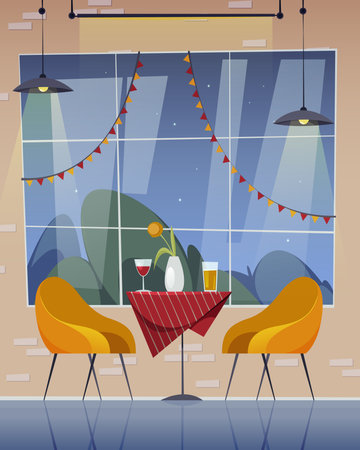Introduction: The Green Shift in British Homes
Over the past decade, there has been a significant transformation in the way British households approach interior design, with sustainability becoming an essential consideration. This green shift is not merely a passing trend but a reflection of deeper societal changes. Concerns about climate change, rising energy costs, and increasing awareness of environmental issues have all contributed to a surge in eco-conscious living across the UK. Today, more homeowners are making deliberate choices to reduce their carbon footprint by selecting eco-friendly materials, investing in energy-efficient technologies, and embracing designs that promote longevity and minimal waste. The government’s push towards net zero carbon emissions and numerous local initiatives supporting sustainable practices have further encouraged this movement. As a result, sustainable home design is now at the forefront of British interiors, inspiring both subtle updates and comprehensive renovations that prioritise the planet without compromising on style or comfort.
Sustainable Materials and Local Sourcing
In the UK, the demand for sustainable home design is driving a significant shift towards materials that are both eco-friendly and locally sourced. British homeowners are increasingly seeking out furnishings and fittings made from reclaimed wood, recycled glass, and other repurposed materials. This approach not only reduces environmental impact by diverting waste from landfill, but also minimises the carbon footprint associated with transportation.
Reclaimed Wood: Character and Conservation
Reclaimed wood has become a hallmark of British eco-conscious interiors. Salvaged from old barns, factories, and even shipyards across the country, this material offers unique character while preserving the nation’s architectural heritage. Its use reduces reliance on newly harvested timber, supporting woodland conservation efforts that are critical in the UK.
Comparison of Sustainable Material Choices
| Material | Source | Environmental Benefit |
|---|---|---|
| Reclaimed Wood | Historic buildings, local salvage yards | Reduces deforestation; reuses existing resources |
| Recycled Glass | UK recycling centres | Lowers energy consumption; diverts waste from landfill |
| Locally Sourced Stone | British quarries | Minimises transport emissions; supports local economy |
Locally Sourced Furnishings: Supporting British Craftsmanship
The emphasis on local sourcing extends to furniture and décor crafted by British artisans. By choosing pieces made within the UK, homeowners help sustain traditional skills while reducing the emissions linked to imports. Brands and independent makers alike are embracing responsibly managed forests, organic textiles, and low-impact manufacturing processes.
Reducing Carbon Footprints: Practical Considerations
Sustainable choices often go beyond the obvious environmental benefits. When selecting materials or furnishings, factors such as durability, ease of repair, and end-of-life recyclability play a key role in responsible design. For many in the UK, opting for quality over quantity—choosing fewer, better-made items—reflects both an environmental ethic and a timeless sense of style.

3. Energy-Efficient Home Solutions
As the movement towards sustainable living gains momentum across the UK, energy efficiency has become a cornerstone of modern home design. British homeowners are increasingly opting for solutions that not only reduce energy bills but also shrink their carbon footprint, all while considering the unique demands of the local climate.
Improved Insulation: Keeping the British Chill at Bay
With notoriously unpredictable weather and damp winters, enhanced insulation is more than a trend—its a necessity in Britain. Upgrading wall, loft, and floor insulation ensures homes retain heat during colder months and remain cooler in summer. Materials such as sheep’s wool, recycled cellulose, and rigid foam boards are becoming popular choices for those aiming to boost energy efficiency without compromising on environmental responsibility.
Double Glazing: A Staple for Modern British Windows
Double glazing has firmly established itself as standard practice in British home renovations. By installing two layers of glass with an insulating gap in between, households can dramatically cut down on heat loss and draughts—a must given the UK’s often brisk climate. Triple glazing is also emerging as a forward-thinking solution for those seeking even greater thermal performance.
Smart Controls: Technology Meets Tradition
The integration of smart controls—such as programmable thermostats, zoned heating systems, and intelligent lighting—is revolutionising how Britons manage their energy usage. These technologies allow for precise control over heating schedules and energy consumption, providing both convenience and cost savings. Many systems are now compatible with voice assistants or smartphone apps, making it easier than ever to tailor comfort levels to daily routines while cutting unnecessary waste.
Bespoke Solutions for British Homes
Recognising that every property has its own quirks—be it a Victorian terrace or a contemporary flat—energy-saving measures are increasingly being customised. From draught-proofing sash windows to installing underfloor heating compatible with period properties, British homeowners are finding ways to blend sustainability with heritage.
A Shift Towards Greener Living
The rise of these energy-efficient solutions signals a broader cultural shift. No longer seen as niche or costly extras, they have become integral components of contemporary British interiors—delivering both practical benefits and peace of mind for environmentally conscious residents.
4. Eco-Friendly Colour Palettes and Natural Textiles
One of the most notable shifts in sustainable home design across the UK is the embrace of eco-friendly colour palettes and natural textiles. British homeowners are increasingly gravitating towards earthy tones, soft neutrals, and muted greens inspired by the nations rich landscapes—think rolling hills, wild moors, and coastal cliffs. These colours not only evoke a sense of calm and timelessness but also align with the principles of sustainability.
A significant part of this movement is the use of natural dyes derived from plants, roots, and minerals. Unlike synthetic alternatives, these dyes have a lower environmental impact and celebrate traditional British craftsmanship. Many British brands now offer fabrics dyed with woad (an ancient blue dye native to Britain) or madder root for warm terracotta shades. This revival of heritage techniques strengthens the connection between modern interiors and the country’s storied past.
Organic fabrics such as linen, hemp, and organic cotton have also become staples in eco-conscious homes. Sourced from ethical growers and produced with minimal chemical intervention, these textiles support both environmental health and local industries. Wool—long a symbol of British heritage—remains popular for upholstery, rugs, and throws, especially when sourced from native sheep breeds.
Popular Sustainable Materials and Their Benefits
| Material | Origin | Sustainable Benefit |
|---|---|---|
| Linen | Flax crops (UK & Europe) | Low water use; biodegradable |
| British Wool | Native sheep breeds | Renewable; supports local farms |
| Organic Cotton | Certified farms (global) | No pesticides; reduced carbon footprint |
| Hemp | UK & Europe | Minimal inputs; fast-growing crop |
This thoughtful selection of materials not only enhances interior aesthetics but also reflects a growing awareness of environmental responsibility. By opting for locally sourced or certified-organic fabrics, British homeowners can curate spaces that are both stylishly modern and steeped in heritage values.
5. Indoor-Outdoor Living and Biophilic Design
In recent years, British homes have witnessed a significant shift towards blurring the boundaries between indoor and outdoor spaces, driven by a growing appreciation for nature’s restorative power and the pressing need for sustainable living. The concept of biophilic design—integrating natural elements into interior environments—has gained traction across the UK, reflecting both modern design sensibilities and a distinctly British reverence for gardens and greenery.
Bringing the Outdoors In
Houseplants have become a staple in many British households, with residents favouring everything from classic English ivy to exotic monsteras. This resurgence of indoor greenery isn’t just about aesthetics; houseplants actively improve air quality and create a calming atmosphere, contributing positively to wellbeing. Some homeowners are taking things further by installing living walls—vertical gardens that transform blank surfaces into lush displays of foliage, often using native plant species to support local biodiversity.
Maximising Natural Light and Garden Access
British architecture is responding to these trends with innovative solutions like bi-fold doors, expansive windows, and glass extensions that seamlessly link interiors to garden spaces. Such features maximise daylight, reduce reliance on artificial lighting, and make gardens more accessible year-round—an especially valuable asset given Britain’s unpredictable weather. Homes are increasingly designed or renovated with direct access to patios, courtyards, or even small urban balconies, allowing residents to enjoy nature without leaving their home environment.
Wellbeing and Sustainability at the Forefront
The move towards indoor-outdoor living is closely tied to sustainability goals. By prioritising natural ventilation and reducing energy consumption through strategic window placement, British homeowners are lowering their environmental footprint. Incorporating native plants indoors supports local wildlife while also fostering a sense of connection to place—a key aspect of British heritage. These efforts not only enhance daily life but also contribute meaningfully to broader ecological resilience.
6. Community Initiatives and Government Support
Across the UK, a robust framework of community-driven projects and government-backed initiatives is actively fostering the transition towards sustainable home design. These efforts are vital in making eco-friendly interiors not just a trend for the few, but an accessible reality for many British households.
UK-wide Programmes Promoting Green Homes
The government’s commitment to sustainability is evident through schemes such as the Green Homes Grant (now replaced by localised funding streams), which historically supported homeowners in improving energy efficiency via insulation upgrades, low-carbon heating, and double glazing. Additionally, the ECO4 scheme (Energy Company Obligation) continues to offer support for vulnerable households, enabling the installation of greener technologies like heat pumps and solar panels at reduced or no cost.
Local Authority Incentives
Councils across England, Scotland, Wales, and Northern Ireland frequently run their own incentives—ranging from council tax discounts for energy-efficient properties to grants for retrofitting heritage homes with sustainable materials. These locally tailored schemes are particularly effective in addressing regional housing stock challenges while promoting green interior solutions that respect Britain’s architectural heritage.
Grassroots and Community-Led Projects
Beyond governmental action, grassroots organisations play a pivotal role. Groups like Transition Towns and community energy cooperatives encourage neighbourhood-level collaboration on eco-renovation projects, bulk-buying recycled materials, and sharing knowledge about sustainable interior practices. Many local workshops provide hands-on training in upcycling furniture or using natural paints, empowering residents to make environmentally conscious choices within their own homes.
The Impact of Collaboration
This synergy between government policy, local authorities, and active communities has created fertile ground for widespread adoption of green design principles in British interiors. It ensures that sustainable home design is inclusive—benefiting not just early adopters or affluent areas but also social housing tenants and those living in older properties. As these initiatives gain momentum, they are helping embed eco-friendly values at the heart of British domestic life.
7. Looking Ahead: The Future of Sustainable Interiors in the UK
As we look to the future, sustainable home design in the UK is poised for continued innovation and integration with everyday British life. From pioneering recycled materials to energy-positive homes, the industry is embracing new technologies that align with both environmental priorities and British values such as practicality, comfort, and understated elegance. Smart home systems that monitor and reduce energy consumption are becoming more accessible, while biophilic design—bringing nature indoors through living walls or natural light—is gaining traction in urban flats and countryside cottages alike.
Emerging trends also reflect a growing appreciation for local craftsmanship and circular economy principles. Upcycled furniture and heritage brands that prioritise longevity over fast fashion are resonating with homeowners seeking authentic, meaningful interiors. Furthermore, government incentives and community-led initiatives are encouraging broader adoption of green practices, from rainwater harvesting to communal gardens in housing developments.
Looking ahead, sustainable design will likely become even more woven into the fabric of British homes, not just as a response to climate change but as an expression of contemporary lifestyle—where sustainability, tradition, and innovation harmoniously coexist. As new materials and methods emerge, the UK’s commitment to eco-friendly living will continue to shape interiors that are as responsible as they are beautiful.


